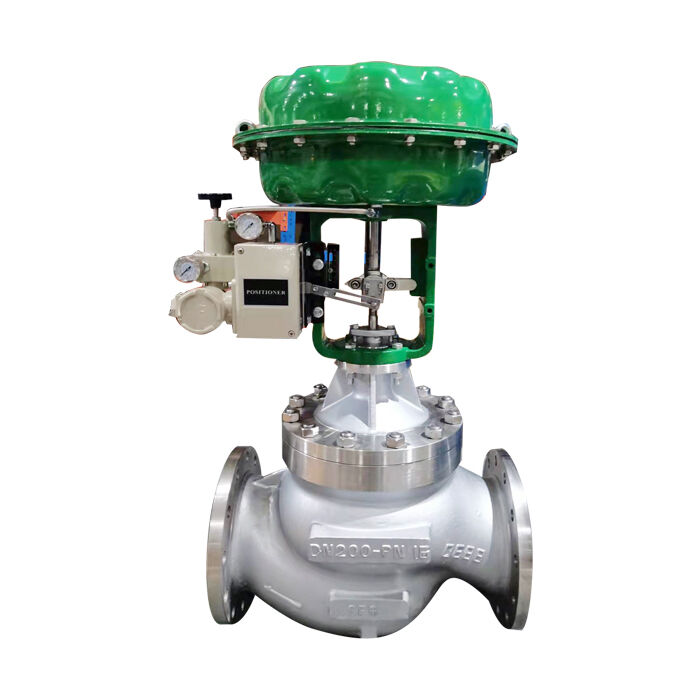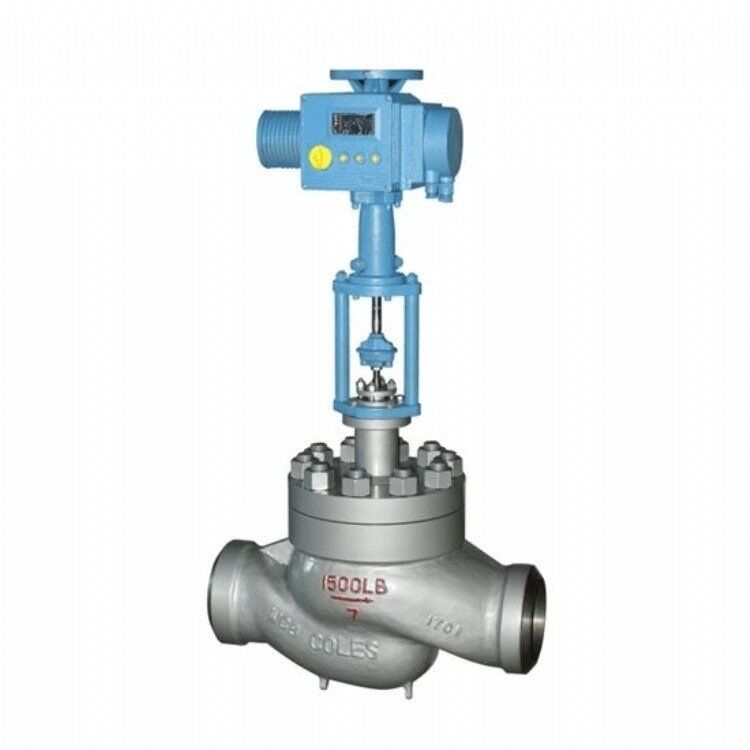How Low Temperature Control Valves Maintain Operational Integrity
Thermal Contraction Management in Cryogenic Environments
Keeping systems running properly in cryogenic conditions means dealing with how materials shrink when exposed to extreme cold. Temperatures down around -40 to well below zero Fahrenheit cause metals to contract quite a bit, which can throw off alignment or just plain break parts on valves. The solution? Valves designed for these situations need special construction materials like certain grades of steel or titanium alloys that handle contraction without losing their shape or function. Industry professionals also rely on clever design approaches including flexible connections between components or built-in thermal compensation features. These kinds of modifications protect against structural damage over time, so valves keep working reliably despite all those wild temperature swings that happen day after day in industrial settings.
Advanced Sealing Mechanisms for Leak Prevention
Leak prevention matters a lot in cryogenic applications because even small leaks can cause major problems down the line, including expensive repairs and safety hazards. Modern sealing solutions have proven essential for these cold environments, especially those using PTFE materials which stay pliable when temperatures drop below freezing. This flexibility gives them an edge over older seal types that tend to crack or fail under similar conditions. Manufacturers are now turning to special designs like lip seals and O-rings to keep things contained in harsh settings. These newer seal designs work better overall, helping valves maintain proper function without leaking, which protects the whole system from contamination and failure risks during operation.
Key Design Features Enhancing Reliability
Material Selection for Low-Temperature Durability
Picking suitable materials for valves used in cold environments matters a lot when it comes to keeping them working properly over time. Stainless steel remains popular alongside certain special alloys because they hold up well even when temperatures drop way below freezing. What kind of material gets chosen really affects how strong the valve stays throughout its life cycle. We've seen plenty of problems happen just from picking the wrong stuff for super cold situations. That's why engineers spend so much time testing different options before settling on what will actually perform reliably in those harsh cryogenic settings where regular materials simply won't cut it.
Precision Actuation Systems in Extreme Conditions
How well low temperature control valves work depends heavily on their actuation systems, especially when temperatures drop below freezing. These systems need to function without fail in cold settings where regular equipment might struggle. The best actuation systems for cold environments typically feature minimal friction points and quick response times, making them reliable even under stress. Take industrial refrigeration plants as an example real world application. Their actuators show dramatically better results during winter operations compared to standard models. This just goes to prove why careful engineering matters so much for keeping valves working properly in extreme conditions.
Applications Requiring Robust Temperature Control
Industrial Refrigeration and Cryogenic Systems
Control valves designed for low temperatures play a vital role in industrial refrigeration setups and cryogenic systems where things get really cold. These special valves help keep everything running smoothly during refrigeration processes, particularly when dealing with gas liquefaction and storing materials at extremely low temps. Managing those sub-zero conditions requires some pretty solid valve tech since we're talking about temperatures below minus 150 degrees Celsius in many cases. Food processors, chemical plants, and LNG facilities all rely heavily on this equipment. Take LNG terminals for example the whole operation depends on good quality cryogenic valves to safely store and move gases like nitrogen and methane without any leaks while keeping pressures stable throughout the system. Without proper valve control, there would be serious safety risks and operational inefficiencies in these critical industries.
Pharmaceutical Manufacturing and Cold Storage
Keeping things cool during pharmaceutical production isn't just important it's absolutely essential if we want our medications to work properly and last as long as they should. The right kind of temperature control valves make all the difference in cold storage areas where drugs sit waiting to be distributed. Without them, everything goes wrong. We've seen plenty of real world situations where even small temperature changes from faulty valves have ruined batches of medicine worth thousands. That's why engineers spend so much time getting valve designs just right these days. When those valves do their job correctly, they help maintain stability in pharmaceutical products, keeping them effective until they reach patients hands. This matters not only because of regulatory requirements but also because nobody wants to take medicine that's lost its potency due to poor storage conditions somewhere along the supply chain.

Benefits of Optimized Valve Performance
Ensuring Process Efficiency in Critical Operations
Getting valves to perform at their best plays a big role in how efficient processes run, since they keep things flowing smoothly through those crucial parts of any system. When valves work reliably, there's less chance of getting stuck waiting for something to happen, which means machines last longer before needing repairs or replacements. Research from several plant operators shows that good quality valve systems can boost whole system performance quite a bit. That's why these little gatekeepers matter so much across different manufacturing setups where downtime costs money and efficiency matters.
Reducing Energy Consumption and Downtime
Good temperature control through properly working valves cuts down on energy use and saves money in the long run. When companies keep their valve systems well maintained, they avoid those frustrating unexpected shutdowns that disrupt production schedules. A recent study found plants with better valve maintenance saw up to 15% lower energy bills. This shows why regular checks and monitoring really matter for both efficiency and wallet health. Most manufacturers know this already but still struggle to implement consistent maintenance programs across all their facilities.
By ensuring process efficiency and reducing energy consumption and downtime, businesses can achieve more economical and reliable operations.
Maintenance Strategies for Long-Term Reliability
Routine Inspection Protocols for Valve Components
Setting up regular checks for valves really helps catch problems early before they turn into expensive breakdowns down the road. Good maintenance means keeping an eye on things like how hot or pressurized the valves get, plus doing hands-on inspections every so often to spot any wear and tear or damage spots. The numbers don't lie either many companies have seen big improvements in how reliably their systems run after starting these proactive checkups, which cuts down on those frustrating unexpected shutdowns. Beyond just keeping operations running smoothly, this kind of maintenance actually makes sense financially too since it stretches out how long important equipment lasts before needing replacement.
Addressing Wear in Low-Temperature Seals
Seal degradation remains a major problem affecting both how well and how long low temperature control valves last. These seals face tough operating environments day after day, and when they start failing, the whole valve system suffers. Regular maintenance makes all the difference here. Simple things like proper lubrication intervals and checking for seal damage during routine inspections can really prolong service life. Industry reports show that companies neglecting basic seal care typically see three times more breakdowns than those who follow good maintenance protocols. The cost savings alone justify the extra attention. Most plant managers know from experience that keeping an eye on seal condition before problems arise saves money and headaches down the road, especially in production lines where even small valve issues can cause big process interruptions.
FAQ
Why is material selection important for low temperature control valves?
Selecting materials like stainless steel and specialized alloys ensures durability and structural integrity under extreme cold conditions, preventing operational failures.
How do precision actuation systems contribute to valve performance?
Precision actuation systems provide low friction and high responsiveness, ensuring optimal performance and reliability of valves even in extreme cold environments.
In which industries are low temperature control valves essential?
Industries such as industrial refrigeration, LNG facilities, food processing, and pharmaceutical manufacturing rely on these valves for maintaining low temperature operations safely and efficiently.
What are common maintenance practices for enhancing valve reliability?
Regular inspection protocols and seal maintenance like lubrication and integrity checks are crucial for extending the lifespan and efficiency of low temperature valves.

